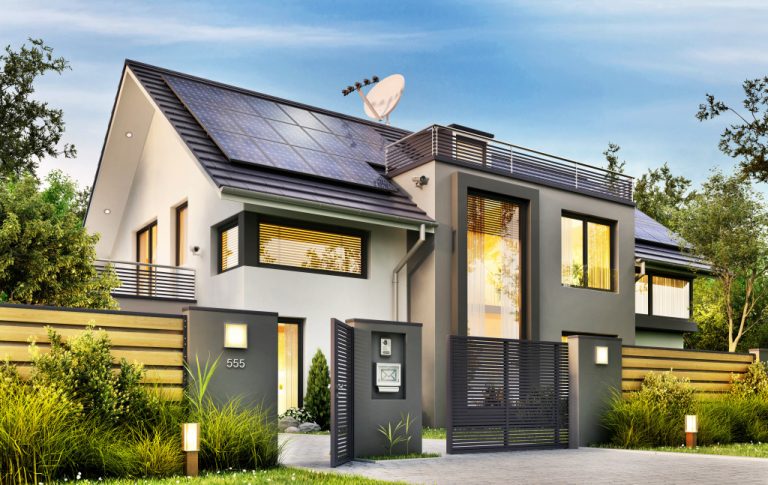- Benefits of a sustainable home include improved energy efficiency, reduced reliance on non-renewable sources, and improved air quality.
- Consider factors such as using natural resources, the location of the home, and sustainable materials when designing a sustainable home.
- Incorporate technology into your plan for added convenience and energy savings.
- You can create a more sustainable home today with careful planning and design considerations!
More and more people are looking for ways to make their homes more sustainable. Whether this means using renewable energy sources, recycling materials, or just being mindful of your environmental impact, there are plenty of ways to make your home greener. But before you start greening up your abode, it’s essential to consider the following details.
Benefits of a Sustainable Home
Sustainable homes offer many advantages in an era of increasing climate change and environmental degradation. From energy efficiency to improved air quality, sustainable homes are designed to reduce environmental impact while providing a comfortable living space. Here’s a brief look at some benefits you can experience living in a sustainable home.
Energy Efficiency
One of the primary benefits of living in a sustainable home is improved energy efficiency. Sustainable homes are built with materials designed to absorb and retain heat, keeping your home cooler during warmer months and trapping heat more effectively during colder months. This means you can save on your monthly energy bills by using less electricity to power your home’s heating and cooling systems.
Additionally, many sustainable homes feature solar panels, which generate renewable energy from the sun’s rays. Solar power is more efficient than traditional power sources like coal or gas. It also helps reduce your carbon footprint—the amount of carbon dioxide you emit into the atmosphere through daily activities such as driving or using electricity—by reducing your reliance on non-renewable sources.
Improved Air Quality

Another advantage of living in a sustainable home is improved indoor air quality. Sustainable homes often feature green building materials such as low-VOC paints and sealants, which release fewer toxins into the air than conventional paint products. This means the air inside your home will be cleaner and healthier for you and your family.
Additionally, many sustainable homes incorporate natural ventilation techniques such as operable windows or ceiling fans to keep fresh air circulating throughout the house without requiring other electricity-powered fans or air conditioners to cool it down in the summer months.
Factors to Consider
As mentioned, there are a few things you need to think about when designing your home for sustainability. Here are some of them:
Go Natural
One of the most important things to consider when designing a sustainable home is opting for natural resources. This can include adding a well inside the premises so the homeowner can have an unlimited clean water supply. Adding a well is a great way to reduce dependence on public water systems and save money in the long run.
However, this would also mean investing in self-priming pumps to ensure an efficient water flow. Pumps are crucial in maintaining an adequate water supply and should be carefully chosen.
Location Matters
When designing a sustainable home, location is critical. If you can build in an area with access to renewable energy sources like solar or wind power, you can immediately save some money on electricity costs. Build in a room with good public transportation and easy access to amenities like grocery stores and medical facilities. You won’t have to rely as much on cars and gas-powered vehicles.
Choose Sustainable Materials
When building a home from scratch (or even just renovating an existing one), it’s important to use sustainable and durable materials. Building materials such as steel framing, recycled wood beams, and insulated concrete forms are all great options for constructing a green home because they require less energy than traditional materials like wood or brick.
In addition, look for products made from recycled materials, such as insulation made from recycled cotton or flooring made from reclaimed wood. Not only will these materials help reduce your carbon footprint, but they also often cost less than traditional building materials.
Utilize Technology

Technology can play a massive role in making your home more sustainable, from sensors that detect when lights have been left on too long (to remind occupants to turn them off) to smart thermostats that learn user preferences over time, so they can adjust heating and cooling accordingly (saving energy in the process).
Utilizing these technologies can make a big difference in sustainability and convenience—allowing homeowners to control their environment while saving money along the way quickly.
Start a Sustainable Home Today!
No matter what type of sustainable home design you choose—whether utilizing renewable energy sources or opting for green building materials—remember that location matters, use sustainable materials whenever possible, and don’t forget about incorporating technology into your plan. These components work together seamlessly to create a beautiful yet efficient living space that is kinder to the environment and saves you money in the long run!

